How to Fix Boot Error Code: 0xc0000098 in Windows?
The error code 0xc0000098 pops up when the users attempt to boot into the Windows operating system. The error code is accompanied by a message that states ‘Windows failed to start’.
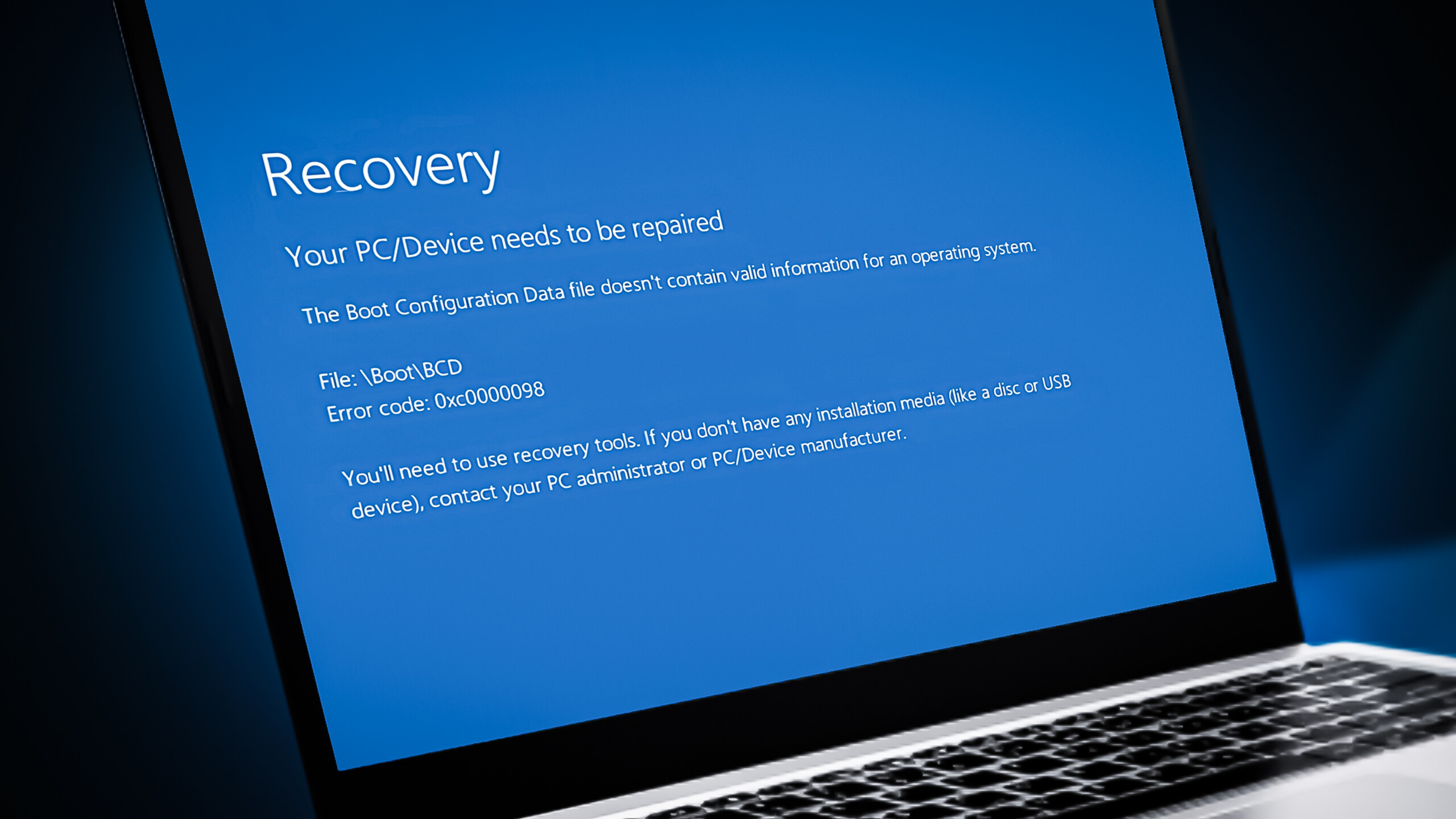
This issue is typically caused due to corrupt boot configuration data files and faulty Windows updates. In this guide, we will walk you through the troubleshooting methods that worked for other users. Before proceeding, we recommend disconnecting any unnecessary hardware devices plugged in.
Launch the Recovery Menu of Windows First
Since the following error code prevents you from booting into Windows normally, you will have to access WinRE to perform the troubleshooting steps.
WinRE is a companion operating system installed alongside the regular Windows operating system. It’s basically a stripped-down version of Windows that includes recovery tools for diagnosing and fixing Windows problems.
To get started, first you need to create an installation media on your device. Once it is done, plug the USB drive in your computer and launch the Recovery Environment of Windows.
1. Rebuild BCD
An issue with the boot configuration data might be causing the issue. The Boot Configuration Data file contains information about your computer’s boot options. If this file is corrupted, your computer will have issues booting.
In this method, we will be rebuilding the boot configuration data file using the Command Prompt to fix the issue. To get started, launch the Windows Recovery mode as described above.
Here is how you can proceed:
- Once you are in the Recovery mode, click on Troubleshoot.
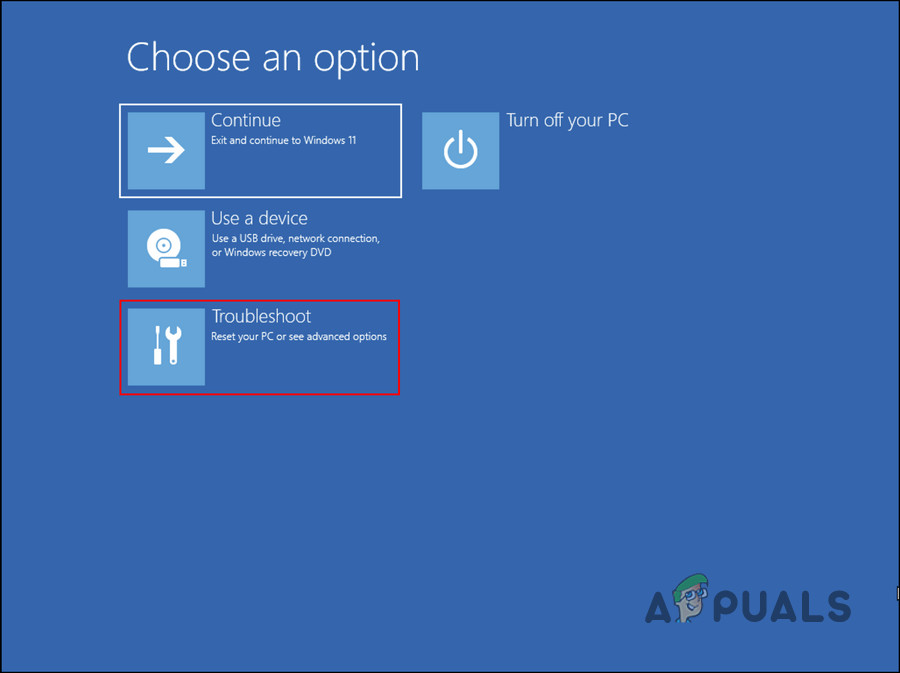
Click on the Troubleshoot option - In the following window, choose Advanced options > Command Prompt.
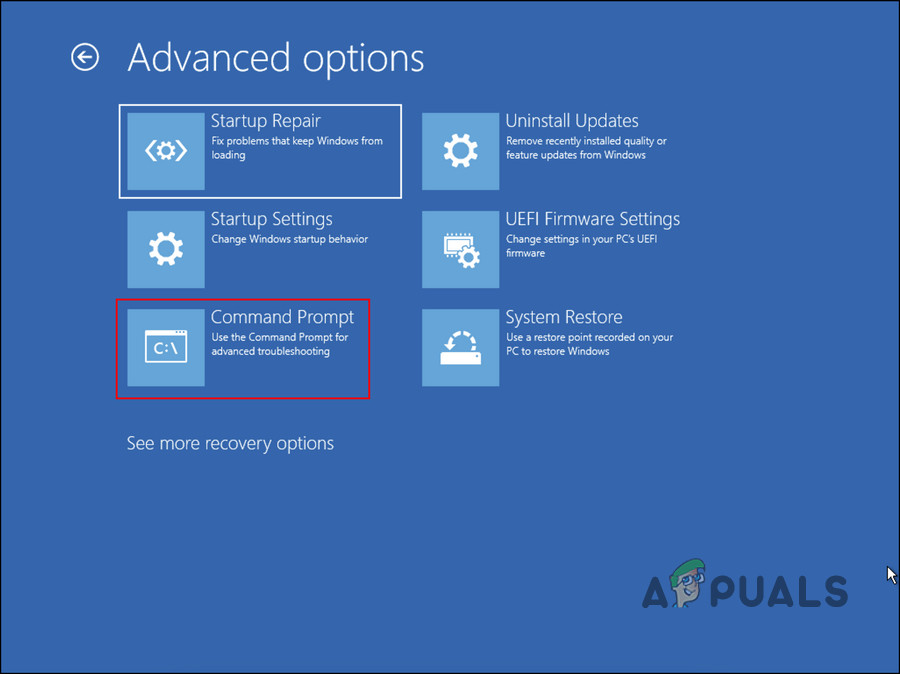
Choose the Command Prompt option - Type the following command and press Enter to execute it:
BCDEdit
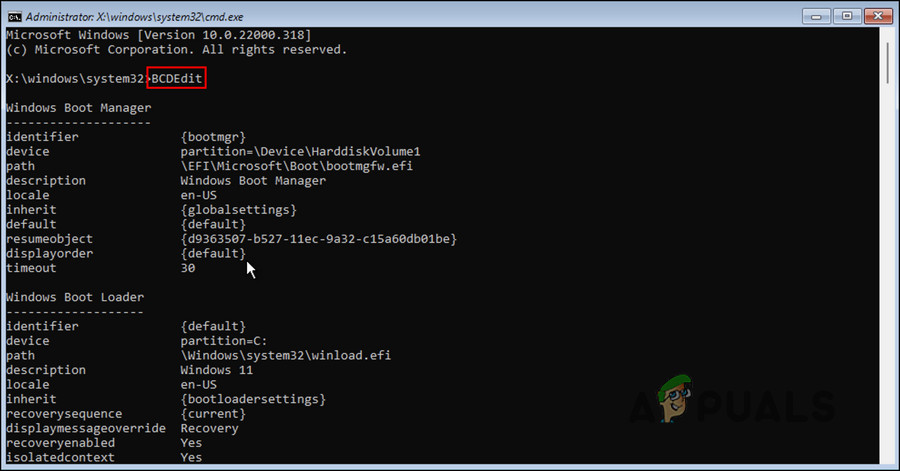
Execute the BCDEdit cpmmand - Take note of the drive letter next to OSdevice in the Windows Boot Loader section of Command Prompt. Substitute that letter for X in the following commands.
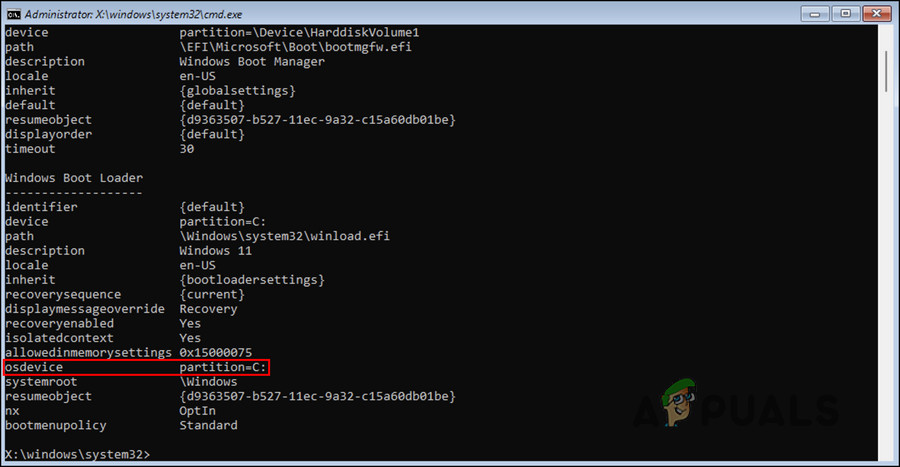
Locate the partition - Execute the following commands one by one:
CHKDSK /f X: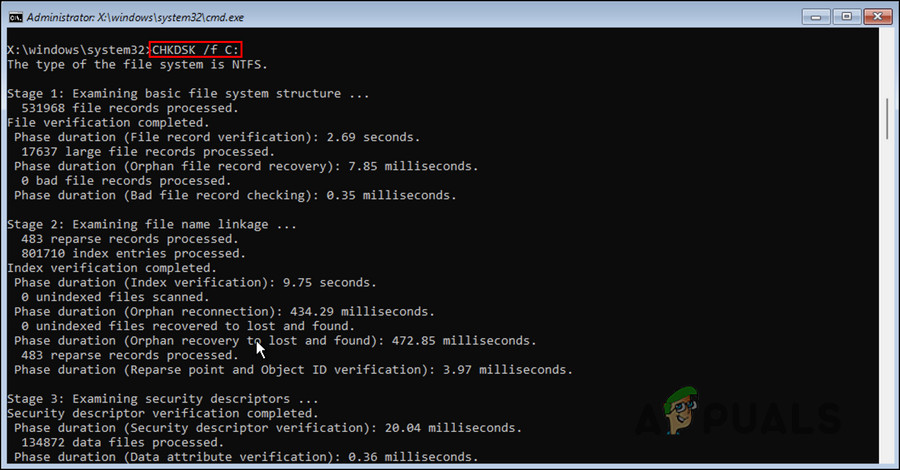
Run a CHKDSK scan - Now execute the following commands:
C: bootrec /fixmbr bootrec /fixboot bootrec /scanos bootrec /rebuildbcd
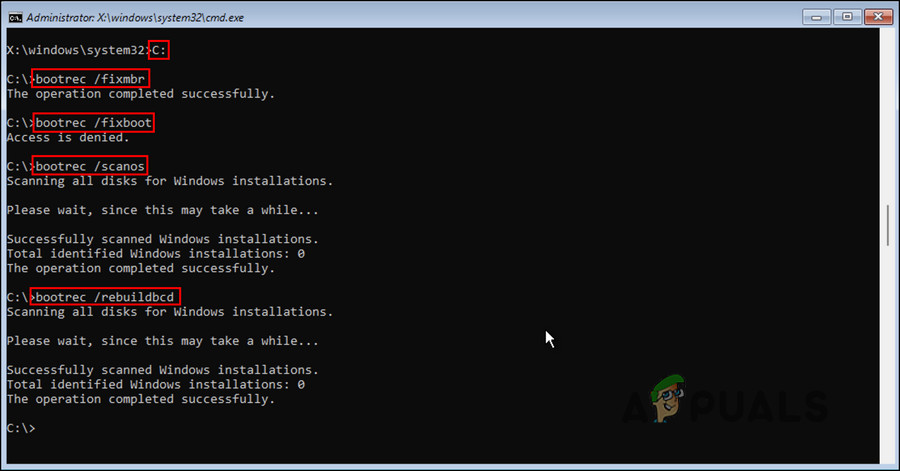
Execute the entered commands - After you have completed the command, type exit and hit Enter to close the Command Prompt.
- Go back to the Advanced options screen and select Startup Repair.

Choose the Startup Repair option - When the process is complete, restart your computer. Hopefully, upon reboot, you will no longer face the error under consideration.
2. Run System Scans
It is also possible for errors in the protected system files as well as viruses to cause issues like these. If you’re having a problem with system-related files, your best bet is to run the built-in troubleshooting utilities developed by Microsoft specifically to fix issues like these.
In the case of the boot error, running the Microsoft System File Checker can help you rule out corruption errors within the system. Upon finding problematic files, the program replaces them with their healthy counterparts without harming the system.
With it, we will also run the DISM utility to repair a corrupted system image.
Here is how you can run an SFC and DISM scans on Windows:
- Turn off your computer, wait for a few seconds, and then turn it back on.
- Use the power button to turn it off again when Windows is about to load.
- Once you have done this twice, Windows will launch the Recovery menu the third time.
- From the list of options, select Troubleshoot.
- Select Advanced options > Startup Settings.
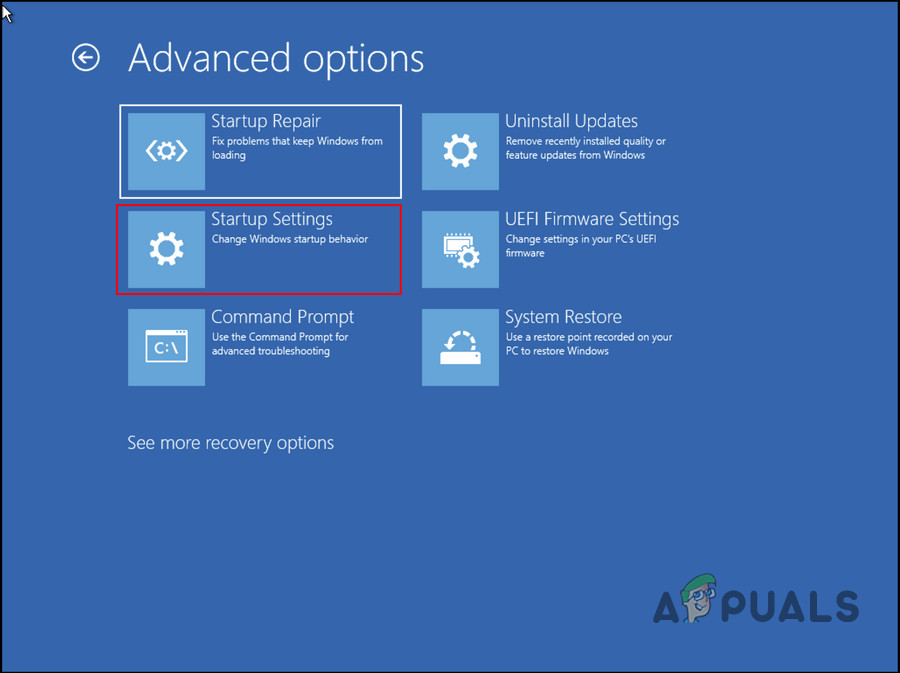
Click on the Startup Settings option - After the PC reboots into the startup settings menu, press F4 to enter Safe Mode.
- When the confirmation prompt appears, click Yes.
- Once you are in Safe Mode, press the Win + R keys together to open Run.
- In the Run window, type cmd and press Ctrl + Shift + Enter keys together to launch Command Prompt as an administrator.
- Click Yes in the User Account Control prompt.
- In the Command Prompt window, type the following command and hit Enter.
DISM.exe /Online /Cleanup-image /Restorehealth
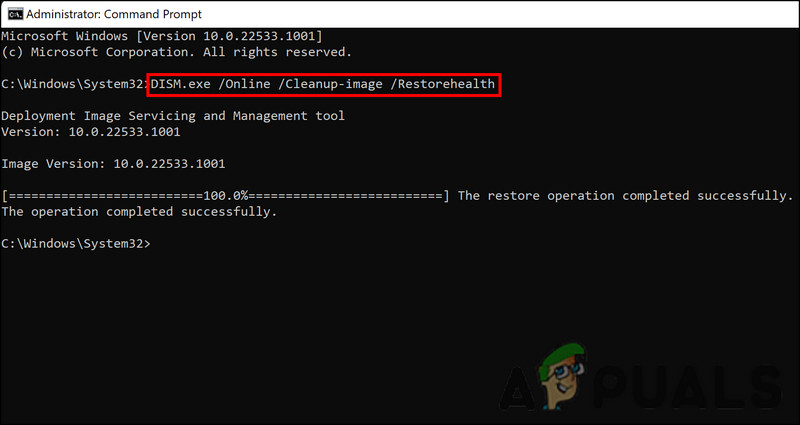
Execute the RestoreHealth command - When the command has been executed, run the following command:
sfc /scannow
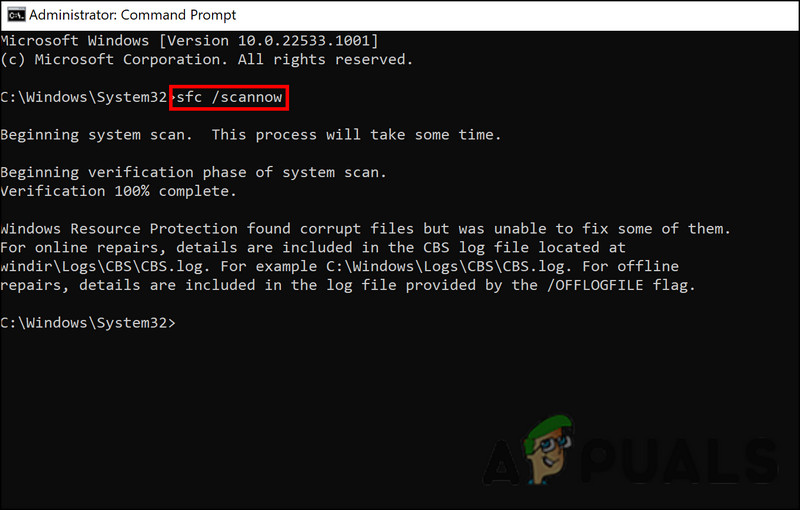
Run the SFC scan - Once the command has been executed, restart your computer.
Hopefully, you will not face the problem again at the restart.
3. Uninstall the Recent Updates
The next thing you can try is to uninstall the recently installed updates. There is a possibility that the latest updates that you installed were corrupt or buggy, which caused the error to occur in the first place.
If the issue began after your latest pending updates were installed, uninstalling them may fix it. This can be done via the Control Panel, Windows Settings, and the Command Prompt.
Here is how you can do that:
- Press Win + R to open the Run dialog.
- Type control in the text field of Run and click Enter.
- Then, click Uninstall a program within the Programs section of the Control Panel.

Click on the Uninstall a Program - Click View installed updates on the left side of the screen.

Click on the View installed updates button - Select the recently installed update by right-clicking on it.
- Using the context menu, select Uninstall and follow the instructions onscreen.
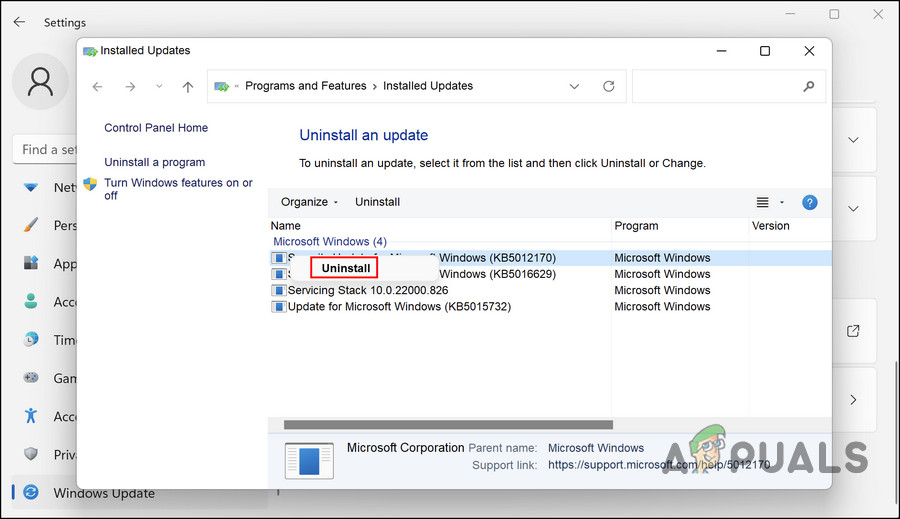
Click on the Uninstall button - Restart your computer and see if the issue returns.
If you can’t uninstall the updates through Control Panel, use Command Prompt instead. Follow these steps to proceed:
- Open a Run dialog again by pressing the Win + R keys together.
- Type cmd in the text field of Run and press Ctrl + Shift + Enter to open Command Prompt as an admin.
- Click Yes in the User Account Control prompt.
- Type the following command in the Command Prompt window and press Enter. Using this command, you can check for the installed Windows updates on your PC.
wmic qfe list brief /format:table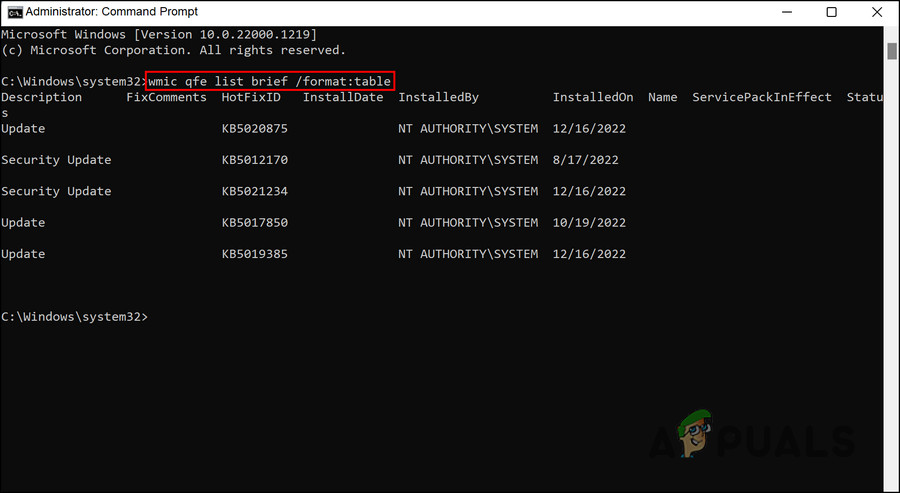
View the installed updates - Every update will have a corresponding ‘HotFixID’. Write down the ID of the update you want to uninstall.

Installed update on Windows - Enter the following command in Command Prompt and press Enter.
wusa /uninstall /kb:HotFixID
Uninstall the update - Your saved ID should be replaced with ‘HotFixID’. Only the numeric portion of the ID should be included. Type Yes to confirm the action.
4. Repair Install Windows
In case the troubleshooting methods have not helped you fix the problem by now, then you can try repair installing Windows.
The repair installation of Windows replaces the existing installation on your hard drive with the version that you have on your DVD or installation media. When you do this, you can fix broken system files and ensure that files, applications, etc., are preserved at the same time.
Hopefully, it will fix the problem once and for all.




